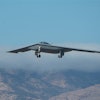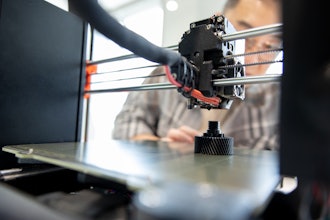MONTREAL (CP) — A final decision may be a year away, but Bombardier Inc. appears to have signalled its decision to proceed with the CSeries aircraft by selecting Pratt & Whitney's energy-efficient Geared Turbofan engine.
The Montreal-based aircraft manufacturer said it chose Pratt over its competitors because the new engine design provides the most fuel efficient operation for the 100- to 149-seat aircraft.
''We're totally confident that this is the best solution for our aircraft,'' Bombardier spokesman Marc Duschesne said in an interview.
''We're still aiming to offer very interesting cost operating savings for the airlines and we believe that the CSeries equipped with the right Geared Turbofan engine built by Pratt & Whitney is the right solution for them.''
The engine, which Pratt claims saves between 12 and 20 percent fuel, likely won't be built in Canada, although the decision hasn't been finalized.
A prototype was tested in Hartford, Conn., and is being ground tested in Florida. Development work was completed in Montreal.
Pratt's Canadian spokesman referred questions to the U.S. head office, saying it's an American project.
The two companies last week reached agreement on the commercial and technical terms, including performance guarantees. The deal must still be endorsed by the boards of both companies, expected in the first quarter of 2008.
In February, Bombardier issued a request for proposals to Pratt & Whitney, Rolls-Royce and CFM.
Bombardier will decide whether to go ahead with the CSeries by the end of 2008, for a possible entry into service in 2013.
Although Pratt & Whitney won't make a formal announcement until the deal is finalized, a company spokesman vaunted the engine's performance.
''This engine uses a special gear system in the middle of the engine that allows all of the components that turn within the engine to operate at their optimum efficiency,'' Matthew Perra said from Dubai, the site of an international air show.
In addition to lower fuel burn, the 30,000 pound thrust engine produces less noise, reduced emissions and lower maintenance costs, he said.
The world's third-largest aircraft manufacturer is the second company to select Pratt's GTF engine. In October, Mitsubishi Heavy Industry said it will use the engine its planned MRJ70/90 regional airplanes.
Finding an engine design and signing up key launch customers are believed to be key factors in whether Bombardier will give the aircraft the green light.
It put the project on temporary hold several years after determining engine technology wasn't advanced enough to produce the fuel cost savings required.
Now that this achievement is in hand, analysts believe the CSeries is one step closer to being launched.
''It makes it perhaps easier for them to take it to airlines to pitch because now they have an actual aircraft they can show to the potential customers and they have some performance parameters they can place on that engine,'' said Cameron Doerksen of Versant Partners.
The engine removes one of the key uncertainties of the project, added Karl Moore of the Desautels Faculty of Management at McGill University.
Moore believes the delays in a launch decision may have worked in Bombardier's favour. Rivals Boeing and Airbus are focused on other aircraft and Bombardier is in better financial health to take on the challenge that comes with a new aircraft, he added.
''They're certainly in better shape than they would have been three to four years ago to launch the product,'' he said in an interview.
In August, Bombardier said it was focusing on re-evaluating its two-year-old business case for the airplane.
The company signed a US$500 million long-term strategic agreement with China Aviation Industry Corp. in June that will make the firm the sole supplier of the airplane's centre fuselage and tail cone.
In exchange, state-owned AVIC would invest US$400 million for research and development, construction of new facilities and equipment for the CSeries.
The wings would be made at Bombardier's facility in Belfast, Northern Ireland, while the cockpit nose would be built in the Montreal suburb of St. Laurent.
Meanwhile, Bombardier announced Monday a series of steps to enhance its support of CRJ regional jet and Q-series turboprop operators.
It will establish a network of regional support offices, add spare parts depots and increase the number of maintenance services providers.
The moves are unrelated to problems with the Q-400 turboprob that have plagued Bombardier of late, said Duschesne.
With more customers outside North America, the centres will provide customer airlines better support and after-market service.
''It shows that we're committed to our products and that we can deliver real-time customer support.''
On the Toronto Stock Exchange, Bombardier shares lost two cents to $5.10 in trading Monday.


















